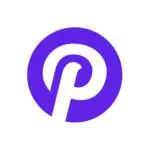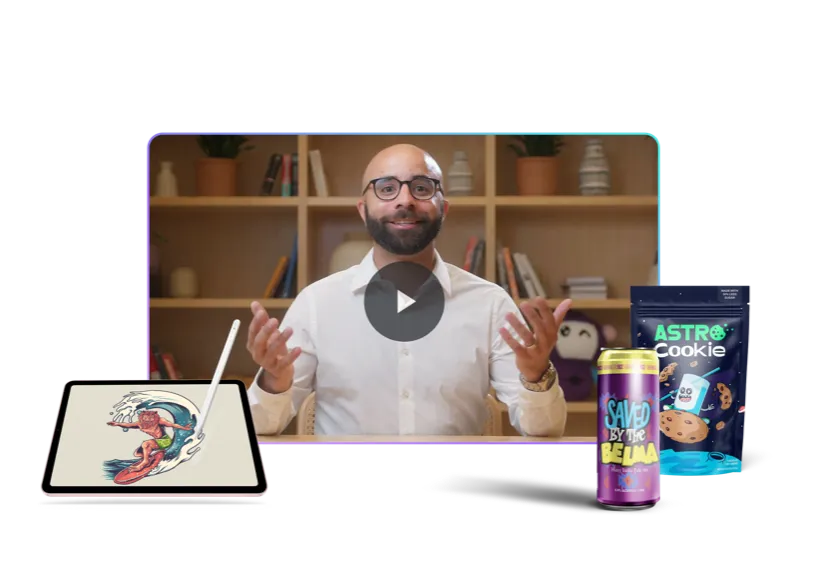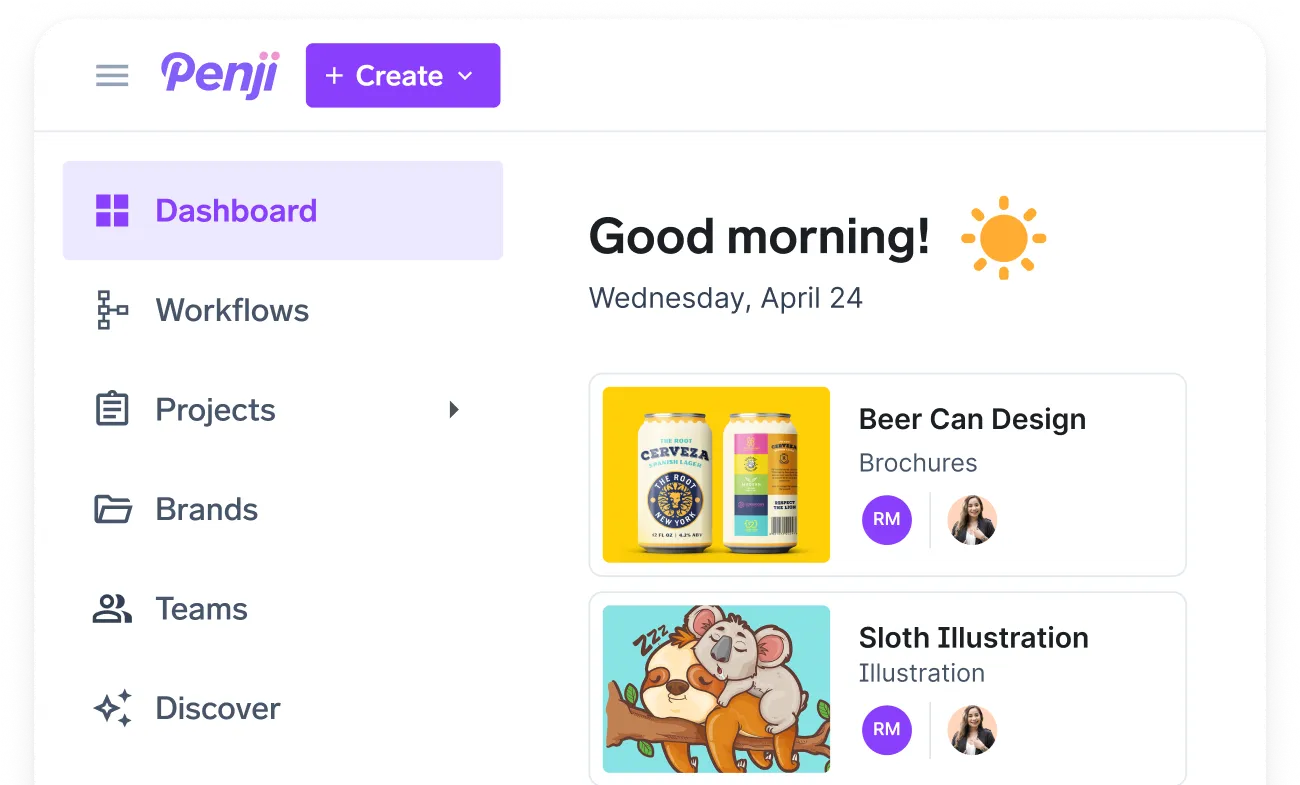![[Fully Managed] Garrett Adkins of Impact Media Ep. 129](https://penji.co/wp-content/uploads/2025/07/BLOG-IMAGE-Garrett-Adkins.jpg)
Introduction
Shannon Donnelly (SD): Alrighty, hello everyone and welcome to the Fully Managed by Penji podcast, the podcast where we discuss marketing and business tips to help assist you on your business journey. I’m your host Shannon, Penji’s Partnership Coordinator, and I’m joined here today with a very special guest, Garrett Adkins, founder of Impact Media. Thank you so much for coming on with me today.
Garrett Adkins (GA): Thank you so much for having me. Excited to be here.
SD: It’s awesome. And it’s crazy that we’re on different coasts.
GA: Yeah. East coast, west coast.
SD: Yeah. It’s ten a.m. here and it’s probably one p.m. there.
GA: You got it.
SD: Okay. I’m doing, I’m doing, I’m understanding it. But I’ve never been on the west coast before this, so it’s very interesting.
GA: Awesome. We are home.
Founding Impact Media
SD: Okay, so can you just start by telling us a little bit about yourself, how you kind of got to this point in your career, and what your inspiration was behind creating Impact Media?
GA: Yeah, definitely. So Impact Media was founded just about five years ago. We hit five years next month in November when we officially launched the website. I’ve been an entrepreneur at heart ever since I was a kid. I was burning CDs and selling them out of my locker to selling candy to importing stuff from Alibaba back in the early days and starting online stores. So eBay, Etsy, always just kind of enjoyed the process of creating things and the act of commerce and kind of like that dance and somebody wanting to basically pay for something that you helped to bring to life. So that was always an interest of mine ever since as early as I can remember.
And as I grew and went through high school, went through university, I got really interested into environmentalism, sustainability, health and wellness, motivational stuff like going down all the meditation and breath work and all that good stuff to help kind of evolve me as a person and those interests. And the more I wanted to also develop while I was learning about these different causes and passions that I had, I found the four hour work week like a lot of people do. And that kind of opened my eyes to the ability to build something online and to build something virtual.
Started developing there, tried all types of things from social media management to editing videos, doing like all the likes. And through that kind of trial and error, I was able to make some really great connections, was able to really fulfill that dream of being able to work remotely and just developed that more and more and was able to work on some really incredible projects.
And fast forward a little bit, after jumping around, I had moved back to Huntington, West Virginia, which is where we’re primarily based out of. We have a few team members up in Montreal, Quebec as well, but started up Impact Media and that was just a way for essentially to take it from me as a freelancer and to build more of a brand and a flag that I could bring more individuals on and really build something that sustains not just my own life and missions, but to be able to bring more team, a part of that process and people that are aligned with supporting purpose-driven brands, which is what we do here at Impact Media.
We specifically focus on content production and placement. So shooting video, editing video that’s sent to us either or, and then distributing that content, whether it’s through organic social media channels or through paid media placement. So we’re able to make the content and place it and follow you around until hopefully you buy or subscribe. And ideally always like to work with brands that we’re passionate about and align with their causes.
SD: I really like that. Well, that’s really awesome. I like that you, thank you for giving me like a good little story because I feel like some people don’t find enough information and I appreciate that. Did you, what I was wondering was, did you kind of fill in the gaps for people that you added to your team of things that maybe you like weren’t as good at or like you didn’t want to do yourself or stuff like that? Not that you’re, you know, putting the work on you, but you said that you kind of, you know, taught yourself kind of how to do a bunch of different things. So is that kind of what you did?
GA: Yeah, definitely. And that’s, I think, a good rule of thumb with most things. I like to know that I have a base in a lot of different aspects of marketing from being able to understand the strategy and the philosophy and strategies of paid media placement. But I’m not the one actually placing the ads for ninety five percent of the time. We have Umi on our team who does that. I can shoot a photo. I can shoot video. But my brother actually has been with Impact from the beginning as well. And he’s head of our he’s our creative director and head of our video. And he’s way better than me. And we’ve just got amazing people that we really source to fill those gaps.
GA: Tried to remove myself more and more, which is a constant evolution and process of how do I find someone that’s better than me at something and then put them in a position where they’re able to excel. And then my job really is to be able to communicate that. And since I know a base understanding or a little bit more than a base, of course, of some of these different aspects, I can really speak to the value of all these different moving pieces and communicate that to a client to help develop strategies and then also set realistic expectations with what we can and can’t do.
So someone says, hey, you know, in this video, can we change the whole background to be the different color sky or just example, something crazy. I mean, with AI now you can probably do a lot of that stuff, but I can realistically say, you know, okay, we are, we aren’t able to do that because I know what is actually capable with these different types of services that we offer.
That’s definitely been always a focus, and it’s also really pushed me in my role and where I’m trying to evolve as an entrepreneur and as a marketer is to focus more on that project management aspect of it, delegation, working with different organizations and companies, even similar to the URL service as well as being able to work and coordinate different moving pieces. And that’s just like my next evolution of how do I go from the implementation and working in the business to becoming better at working on the business, marketing, selling, operations, financial planning, which is just another ceiling to push through and it’s got its own challenges and excitement. And I’m really excited to see that evolution, how it pushes me.
SD: That’s really cool. And I like that. It’s nice to be able to have a foundation for all of these different parts, not only because you have that experience, but you also are able to have these conversations with people on your team better because you realistically know what’s going on and how the processes of their job is. Whereas I think a lot of people will delegate at different positions, but they don’t really understand them completely. And they don’t understand the work that goes into them. So their expectations are not managed correctly. And that’s a very lovely position to be in. And it’s nice to be able to step kind of up where you know that you’re looking towards something where you’d like to just take a little step back, which is nice.
You kind of get to see what you created and how, when you set it yourself up for success, you can see how efficient it is, which is really cool.
GA: Yeah, we’re constantly evolving that and I think that that’s a good note to make. My job isn’t always focused on the how it gets done or the what but it’s more so the why of also keeping up with trends and asking questions of, we might have an amazing design come through or a video come through and I’ll be the person that they get it eighty or ninety percent of the way there and I’m like, let’s put text right here, let’s change this hook a little bit and let’s use this type of format or export because this is what’s going to drive the most engagement and kind of helping bring those bridges together.
We can make a stellar video, but if it’s not going to stop someone’s scroll, how can we evolve that process as well? So it’s also fun to be that second set of eyes. And I know that a lot of creatives can sometimes, it can be exhausting to work from something from start to finish. So when you’re surrounded by this team, whenever Sam or whoever it is, has actually gotten it to ninety five percent of the way there and they need someone to come in and be like, I’ve got this fresh set of eyes, let me look at it, give feedback. I think it really creates a great system and really helps the final product.
SD: I definitely agree with that. We have a similar system. We redo our website constantly. And I think when I came on the team, my boss was super excited because he was like, oh, new person to look at the website because we’re looking at the website every week. That’s great. But it definitely helps because I think when you’re looking at something for so long, it’s really hard to see certain things, especially put yourself in the headspace of a client or a potential client.
You might be so proud of something that you did and you think it’s great but you’re not looking in the lens of who it’s for because you’re just the creator. And I think that’s difficult sometimes.
GA: Definitely, yeah, I think that that’s a really good thing to do. And also it sounds like the environment and culture that you all have set up in place is that it’s open and welcome to that feedback. And I think that that’s another good thing to keep in mind whenever you’re in the creative field or working in businesses. And as creatives that we work in this field, we can be emotionally tied to that product. And sometimes it’s hard to get that feedback, but to be open and be on the same mission of, we have this new team member that’s come on board and let’s get their honest thoughts and feedback and let’s open this and use this as an opportunity for growth and not as an opportunity for hurt feelings or any of that sort of thing.
It’s more so like, how do we evolve and keep focused on the mission and that’s to create the best product. And that’s definitely something that we should do more of is revisiting our own website and stuff. I’m trying to put more effort into it. So I’m glad to hear that you all are doing that as well, but I’ve always pushed myself to at least every few months to do my own audit of my own social accounts and everything where I’m always clicking around. I’m seeing from, I’m looking out and then it’s good to take a step back and be like, what does my actual profile look like? What is it actually saying?
It’s easy for us to set something up two or three years ago and not go back and make sure, one, are all the links and stuff still working? And then two, is it still communicating the type of brand that we want to communicate and attracting the right client?
SD: No, completely. I think I was kind of scared because I had had jobs before this that people were not good with criticism. And I think one of my first assignments when I was working here was, write all the things that you don’t like about our website. I was like, oh my God, they’re going to fire me immediately. They’re going to be so upset. But no, they’re not like that. So it’s very nice. And I think it’s really important to be critical of your work. I think being in the creative industry, it’s very difficult because you can work so hard on something and it’s just not it.
And I think that’s really hard to take in sometimes. But it’s also like a lot of times, especially in agencies, you’re creating something for someone else and they can have a different opinion or their audience can have a different opinion. And we always have to factor that into what we’re doing. It’s really hard because you can create something that’s objectively beautiful, but it’s not marketable for that specific place.
Navigating Creative Feedback and Criticism
GA: Exactly, exactly.
SD: So speaking of kind of being consumed with your creative lens, because you guys do a lot of social media advertising, I was wondering, is this kind of just an opinion question, but how do you navigate being consumed with social media and not having it affect your well-being?
GA: Great question. I’ve really tried it all. You’re more so speaking to just using it as a consumer, but also working in the field, is that what you’re referring to?
SD: Learn what’s going right.
GA: Yeah. There’s a couple of ways that I think about that. Number one, I’ve had this News Feed Eradicator on my own Facebook, like on my laptop that I use. So when I go to Facebook to have to check on something or work, it just has a motivational quote. It’ll be Alan Watts or Buddha or Michael Jordan or something. Just a quote and it’s pretty much reminding me don’t get consumed here because you can lose so much time going down the rabbit hole.
I have that in place. I have Opal, which they have some great advertising, that turns off my social media for certain times of the day. So I know my weaknesses, and if I have access to it, I am someone who just needs to create barriers to make that much harder for me to consume. So I do personally use a lot of tools to try to minimize those minutes, five minutes, ten minutes, that really add up to losing a day.
Also, I try to be critical, especially with the way Instagram and TikTok are evolving. Whenever you get on there, you’re starting to consume just whatever they feed you. They’re really good at it and they keep your attention. You’re spending less time looking at people you actually know and more on what’s going to suck you in for a longer amount of time.
But I do try to make sure that I’m following pages and unfollowing pages as it comes up. Going through who I’m following—does this page still serve me? Should I unfollow them and start finding some other marketing professionals or health and wellness pages that are going to better benefit me? I mean, the easiest thing is try to minimize that time on there as much as possible.
But also, when you are using it, I encourage my team to look at social media as an opportunity to learn—not just consuming the what but consuming the why. Why did something stop your scroll? Why is this engaging? What was the strategy that they used? Because you can kind of learn from every piece of content—is there a type of text or hooks they’re using? So even whenever we’re all going to be guilty of scrolling, hopefully there are a few marketing tactics that can be taken away and brought back in and used for different campaigns and different clients.
SD: Yeah, no, I really like to ask this question because I think it’s a difficulty that people who aren’t in this industry run into, but I think being in this industry, it’s so much harder for it to kind of consume your life because being online is helpful. It actually furthers your business or your mindset on how marketing is changing.
And I think it’s very difficult to have that separation of being consumed by something and it impacting you. Because I don’t know if we’re meant to be online this much.
GA: I don’t think so. And that’s the one I think I was thinking too—use it a little bit, try to find some… like even email’s a great one to consume it or go to somewhere specifically. But if you’re weak like me when it comes to getting on social, then if you can just minimize your time, probably the better. Be as active as you can. But honestly, I think that minimizing it and finding resources outside is going to be more than enough. And still, you’ll probably be on there for an hour or two a day, which is plenty.
SD: Yes, I am weak. I go down rabbit holes all the time. I think the other, the last rabbit hole I went down was catfish. I don’t know why. I just know, I learned all these unusual facts about things. And then I’m like, oh my God, this is so cool. And then I keep doing it. Like two hours, now I know all these things about catfish for no reason. They don’t fish. There’s no reason for me to know about catfish.
GA: That’s kind of cool. Yeah. There’s giant ones, like the size of people. There’s giant catfish. I didn’t know that.
SD: Yeah. People use them to do hand fishing. They go into the hole and they’ll pull out a whole catfish. I think that’s one of the types of fish. So there’s different types of fishing for them as well. But yeah, it’s an interesting—that’s probably a pretty cool rabbit hole to go down actually.
GA: It’s kind of fun. I do love rabbit holes, but the internet makes it way too easy to go down them, and they waste a lot of my time.
SD: Definitely. We’re doing more productive things other than learning catfish facts, which I have no use for, and no one really wants to hear them. But yeah, I actually think that I like that you were talking about the different kind of barriers you can put in to keep yourself from consuming, because I want to look into those, because I have a problem with it. It’s nice because again, it’s helpful for your position to be able to consume yourself.
GA: Yeah. Trying to minimize that. Another thing that I do is I bought an old-school alarm clock that I have in the room that my fiancée and I sleep in and then my phone is outside of it. So we’ve been good about leaving our phones away. And this is another reason why I’m weak because I would just go right back to sleep. So again, there’s another way that I try to trick myself into getting up. I’ll set the alarm on the standard one and then if I’m awake from that one, I’ll hear my phone in the other room and then I’ll have to walk.
SD: That is really smart. I do have also and I have the app. The basic alarm clock with the bells on top. I got one of those. And that was the sole purpose of it so that I could put my phone on do not disturb and not put it by me. But I have this paranoia that I’m going to miss an important thing and my phone isn’t going to be in the room. But I also know that I could just be sleeping during the important thing, so it doesn’t really matter. So yeah, I’m trying to get out of my head for that because I think that’s really important. Screen time is… take the jump.
Platform-Specific Content Creation
SD: Okay, switching gears. So when creating content—and again, I don’t know how involved you are in this now—but if you were still doing it or if you’re not doing it now, how would you go about, in a general sense, making an ad campaign for two different short-form social media apps? So like, say you’re doing Instagram Reels and TikTok, would you think that you would use the same ad because they’re both short-form? Or do you think that you’d vary it based off of the social media itself?
GA: Definitely trying to switch it up per platform. We’ve actually haven’t focused too much on TikTok. We’ve kind of more so stayed on Facebook and Instagram, a lot of Google placements, some of the YouTube aspects as well. But it still rings true with the variations of it and thinking on that on a per-platform basis. There are some similarities, of course, but the more optimized you are per platform, the better it’ll be.
I think that’s one of the main decisions why we decided to continue to focus on certain platforms and not on others—because we didn’t want to stretch ourselves too thin. Everybody’s got different strategies to it. My philosophy is that you can make Instagram your multimillion-dollar platform. You can make Facebook your multimillion-dollar platform. As long as your clients are there and you’re able to engage with them.
Of course, we need to have a holistic approach and also pull in email, text, and optimize the conversion rate for these landing pages. But to go back to your point, whenever we do develop per platform, we are thinking of different dimensions, how we’re restructuring it, and also the length as well.
SD: That makes sense.
GA: Yeah, that’s pretty much how we think about it. And then also, whenever we’re coming up with the creative process and doing a lot of pre-production—which is super important with anybody who does video—they know how important pre-production is. It takes more time upfront, but the editing process and post-production is going to be much easier when you have a very clear strategy in place.
During that pre-production stage, we’ll use Facebook Ads Library. We’ve used different tools just to do a lot of market research, see what types of ads are running, go to competitors, see industry standards. Facebook Ads Library is great because you can also see how long an ad has been running. So if it’s a larger company, we hope that their paid media manager is making that decision to continue to run it. At least that’s the thought and the hope—that it’s showing it has a successful type of template or replicable process.
So we use a lot of that different stuff as well. We go per platform and do as much research and pull as much inspiration as we can to help that process of how we want to structure it.
Managing Client Expectations
SD: Is there times where a client believes that they’ll have success on a certain social media app, but that’s not really the case? Like maybe the clientele isn’t based on that app or the age range doesn’t fit? Does that happen?
GA: Yeah, definitely. I think that’s a big part of expectation setting when you’re working with a client or company. Oftentimes, you’re working directly with the CEO or the visionary of the company, especially in smaller companies—and smaller can even be a few million in revenue. And they have bold, wild ideas. I love the energy. But at the same time, they might just see a trend.
This is part of the reason why they’re visionaries—they get excited, they have a lot of inspiration and motivation. They’ll say, “We need to be on TikTok.” Or, “Instagram’s got Threads now, we need to be doing that.” And it’s about setting those expectations: let’s pull it back a little bit and make sure we find the winner for you and let the numbers speak for themselves.
So that’s one approach we take often—helping clients rethink what’s possible, committing to a plan, and letting the numbers guide us. Try to optimize rather than restart from scratch all the time. A lot of these platforms can be successful, but sometimes Facebook will perform better than Instagram. Google Search might be better for some products than Meta.
All in all, we try to limit the starting scope. Maybe it’s just Meta, or Meta and Google. But not pulling in LinkedIn, TikTok, and every new platform under the sun just because it’s shiny and exciting. We need to remind them: we’re here to make you money profitably. That’s the goal.
SD: Yeah, of course. I think it’s nice to be transparent about that as well. Because a lot of clients will probably come to you wanting a certain thing and you can try, but that kind of sets you both up for failure if it’s not something that’s right for them. It’s much easier to have that conversation early on.
GA: Mm-hmm. It’s hard not to people please and just go with whatever they want. But it’s our job to say, whether you like it or not, here’s my professional opinion. And this is where I think we should move forward. That builds long-term relationships in business, which is what you truly want. Sacrificing a couple smaller gigs that don’t align is going to save you a lot of headache and stress.
It’s more about going with clients you can truly serve and align with. It’s hard to say no sometimes, but in the long term, we’ve never regretted not taking on something that didn’t feel like a good fit. Because we knew we weren’t able to match up and it would just push everyone back.
SD: Yeah. And I think if they don’t appreciate your professional opinion or honesty, they can just not use your services. It’s good to find that out in the beginning rather than halfway through when they just think you’re doing a bad job. A lot of people respect that.
GA: Yeah. And if people don’t respect that, it just shows—hey, we’re not a fit for everybody. And that’s totally fine. It’s hard to think like that when you’re starting a business, but it makes things better. You’ll get a lot more respect when you’re able to set boundaries and expectations.
SD: Exactly. And I think it sets you up for success with your relationship with them. Because referrals are very important for this business, and having that good relationship is valuable. You can statistically do a successful job, but if they didn’t like working with you, you’re probably not getting a referral.
So it’s nice to have a good relationship from the beginning and know that’s what it’s going to be. You find that out very quickly by being honest and not giving them a pipe dream. It’s good to believe in the people coming to you, but there are realistic expectations. That’s important.
Rapid-Fire and Wrap-Up
SD: So it’s game time. I’ve decided. Okay, I’m going to ask you something that’s not super crazy and absurd first. If you’re doing outreach, what do you think is the best way of doing it in a general sense? Because I know there are so many things that you can do outreach for. LinkedIn or email?
GA: I would say email. We’ve had some success with email. I haven’t went too deep down the LinkedIn rabbit hole, but I think it’s a bit easier to stand out on email where LinkedIn feels very saturated with it. And it’ll take a bit of quantity on both sides if you’re doing it at scale, but I think that you’ll probably have better success when it comes to email.
SD: I kind of agree. I’m not even a big guy on LinkedIn and I still get spam. That’s crazy. I can’t imagine how much other people are getting spam. I don’t love LinkedIn. A professional social media gives me bad juju, but I think it’s obviously helpful. Especially for this industry—agencies are often very heavily involved in a social media presence on LinkedIn specifically.
GA: Yeah. And if you’re still able to make it work—if you thought it out and built a message to be very unique and actually care. But it’s still hard to stand out because of the amount of spam that’s being pushed through. Which is a rule of thumb for everything: if you’re going to do it, make sure you’re actually engaging. Having a quality type of outreach is going to serve you best long term. Same is true with email and LinkedIn. But LinkedIn is an easy one for people to put a filter up and instantly not look at messages whenever they’re attached to these.
https://www.linkedin.com/in/garrettadkins









